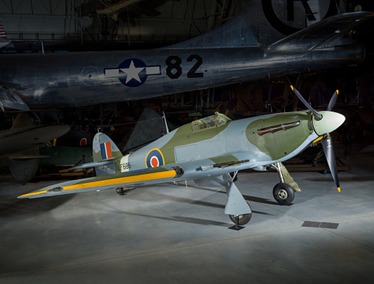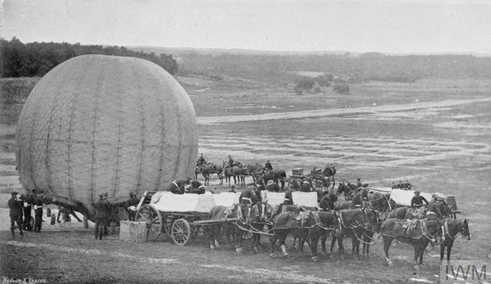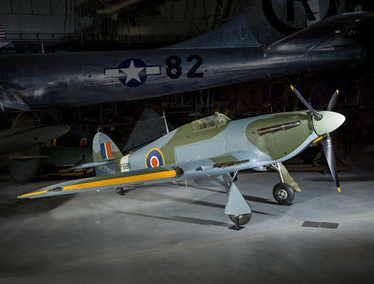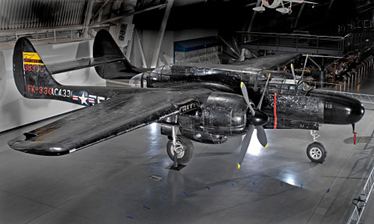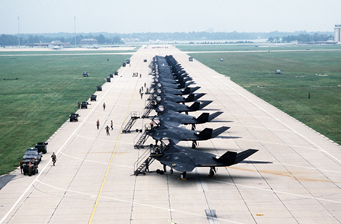AIR POWER MAY ENDWAR OR END CIVILIZATION
Manasvi Kommuri • 2024-06-06
𝙄𝙣𝙨𝙩𝙞𝙩𝙪𝙩𝙚 - 𝙃𝙚𝙣𝙧𝙞𝙚𝙩𝙩𝙖 𝘽𝙖𝙧𝙣𝙚𝙩𝙩 𝙎𝙘𝙝𝙤𝙤𝙡 Examining the pivotal role of aviation in military evolution through the major conflicts with a strong focus on aviation during the world wars.
Throughout history, human civilization has been captivated by tales of flight, from the magical escape of Icarus and Daedalus to the legends of pegasus and griffins from folklore. It wasn't until the 19th century that these myths began to take on a literal form, leading to the rapid advancement of military aviation in the present day. In this article, we will delve into pivotal events in aviation that have forever changed the course of human history. As Winston Churchill once said, “Air power may end war or end civilization” and these events have all transformed military combat in significant ways.
Before the sleek, aerodynamic designs of modern aviation, the earliest means of human flight were balloons, which graced the French skies for more than a century before World War I. First demonstrated by the Montgolfier brothers at the court of King Louis XVI and Marie Antoinette, these balloons saw significant improvements by physicist Jacques Charles, who extended their duration and range using hydrogen fuel. The ability to look at the battlefield from above and carry out reconnaissance gave commanders a new perspective and this technology quickly captured global curiosity for both scientific exploration and military application.
However, it is generally agreed that the first significant leap into military aviation occurred with the Wright brothers. On December 17, 1903, Orville and Wilbur Wright made history with their Kitty Hawk Flyer. The first of their four flights that day lasted just 12 seconds and covered only 180 feet, but it demonstrated that human flight was possible. Their final flight of the day surpassed the first, traveling 852 feet in 59 seconds. Shortly after the fourth flight, the Kitty Hawk Flyer was blown over by the wind while parked and was severely damaged, never to fly again. Despite this, the Wright brothers had proved that powered aerodynamic flight was achievable, setting in motion the grand advancements in aviation that would follow.
A little more than ten years later there was dogfighting over Europe in WW1. At first, airplanes merely provided a vertical battlefield perspective, replacing the balloons that had been used for this purpose since the American Civil War. When the enemy began to counter this advantage, aircraft were armed, air battles ensued, and dogfighting tactics were developed. The invention of the interrupter gear and “aerial darts'' which allowed machine guns to fire through the propeller arc, made it possible for pilots to shoot down other planes. The regular Army was not impressed, however, maintaining that aviation was peripheral to the serious business of ground warfare. Following World War I, there was a significant decline in military aviation. Many governments, including the United States, slashed funding for aviation programs. However, the technological advancements that were made during the war had a lasting impact. New engines, stronger materials, and better aerodynamics led to faster and more powerful aircraft. The introduction of monoplanes, such as the Hawker Hurricane and the Supermarine Spitfire, revolutionized military aviation.
In 1927, Charles Lindbergh made the first solo transatlantic flight from New York to Paris on his plane The Spirit Of St Louis making him an international hero and he later wrote a Pulitzer - prize winning book about his experience. His family is also famous for “The Trial of the Century” due to the famous Lindbergh baby kidnapping case, which Agatha Christie based “Murder on the Orient Express” on. Lindbergh is credited with helping to usher in the age of commercial aviation. His incredible acts of courage continue to inspire others. In 1977, astronaut Neil Armstrong and others formed The Charles A. and Anne Morrow Lindbergh Foundation that supports sustainability in aviation and other environmental efforts.
Lindbergh was also heavily invested in pioneering aviation for the war effort of World War 2. Military aviation played an even more significant role in World War II than other previous conflicts. Airplanes were used for bombing, transport, reconnaissance, and dogfights. The development of jet engines and the atomic bomb also changed the course of the war and the use of radar technology and advanced weapons systems such as guided missiles also played a crucial role in the outcome of the war. Radar helped give the Allies an edge in detecting and intercepting enemy aircraft, while the German V-1 and V-2 rockets provided a terrifying new threat that could be launched against enemy cities from great distances.
The next significant achievement occurred in 1947, when Chuck Yeager broke the sound barrier in a Bell X-1 Aircraft, called the The Glamorous Glennis. This was a major achievement in aviation history and paved the way for supersonic flight. He accelerated to a speed of Mach 1.06, which is approximately 700 miles per hour. At this speed, the Bell X-1 broke through the sound barrier, producing a loud sonic boom that was heard across the Mojave Desert.
Across the end of the 1900s, significant steps were taken to optimize the speed and efficiency of aircraft and these steps were clearly shown through military aviation performance in a trio of major conflicts from the 1950s to the end of the 20th century. The Korean War (1950 - 1975) saw the first extensive use of jet-fighters in combat. In fact The Korean War was the last (and only) time large numbers of piston-engine and jet-engine aircraft shared the wartime skies. It was the last US major war without at least some space support. Players such as the F-84 Thunderjet and the F-86 Sabre were heavily in use during this time and established the superiority of American technology during dogfights. The Vietnam War saw the rising use of helicopters in combat for troop transport and combat support as well as medical evacuation, reconnaissance and logistics, leading to the development of better and more advanced helicopter technology. Finally The Gulf War (1990-1991) saw the widespread use of precision-guided bombs and cruise missiles. One well-known aviation operation during this war was Operation Dust Storm, where 27 Hellfire missiles destroyed Iraqi radar sites, and the US Apaches followed with 100 Hydra-70 rockets that knocked out the associated anti-aircraft guns. The attack created a twenty-mile gap in the enemy's air defense network opening a corridor through which U.S. Air Force F-15E Strike Eagle fighters, supported by EF-111 Ravens, raced into Iraqi air-space virtually unopposed followed by hundreds of U.S. Air Force, Navy, Marine Corps and Coalition fixed-wing aircraft and cruise missiles, turning the tide in the war. This demonstrated the extreme effectiveness of these weapons and their ability to make a strong difference in war and paved the way for their commonplace use in modern warfare.
Whilst warfare and conflict is often the cause of advancement in aviation and weapons technology, the infamous 9/11 attacks also caused a similar effect. The attacks led to a major increase in the use of Unmanned Aerial Vehicles which have drastically changed the way wars are fought. Unmanned Aerial Vehicles (UAVs), or drones, have revolutionized modern warfare by enhancing surveillance, enabling precision strikes, and reducing risks to military personnel. Their real-time intelligence capabilities and extended operational endurance allow for continuous monitoring and detailed battlefield assessments as well as their ability to affect the opposition psychologically and reduce morale of civilians. Cost-effective and versatile, UAVs support logistics, electronic warfare, and cyber operations, while their use by non-state actors and smaller nations levels the playing field against more advanced adversaries. Additionally, drones influence military tactics, strategies, and ethical debates, raising important legal and humanitarian questions about their impact on warfare and international law.
Recently, space travel has also significantly impacted military aviation by enhancing satellite-based reconnaissance, communication, and navigation systems, thereby improving real-time intelligence and global situational awareness. Advances in space technology have led to the development of missile defense systems and hypersonic weapons, transforming strategic defense and offense capabilities. Space-based assets provide secure, resilient communication networks and precise GPS guidance for military operations, while fostering innovation in aerospace engineering and propulsion technologies. The militarization of space has also introduced new domains of warfare, prompting international discussions on space security and defense policies.
In conclusion, aviation has played a pivotal role in the evolution of military strategy and capabilities, fundamentally transforming the nature of warfare. From the experimental flights of World War I to the decisive air campaigns of World War II, aircraft have continually advanced the reach, speed, and effectiveness of military operations. These developments not only revolutionized combat tactics but also reshaped global power dynamics and defense strategies. The major conflicts of the 20th century demonstrated the critical importance of air superiority and innovation in aviation technology, setting the stage for contemporary military doctrines. As we reflect on the history of military aviation, it is evident that the advancements made during the world wars laid the foundation for the sophisticated aerial warfare and strategic planning that define modern military engagements.
REFERENCES:
A look back at the Wright brothers‘ first flight - Space Center Houston
Charles Lindbergh: Biography, Trailblazing Pilot, Baby Kidnapping
World War II Aviation | National Air and Space Museum
The Role of Military Aviation in World War II: An Overview.
The Coming of Age: The Role of the Helicopter in the Vietnam War.
Operation DESERT STORM | U.S. Army Center of Military History
See More Posts
Copyright © 2021 Govest, Inc. All rights reserved.
